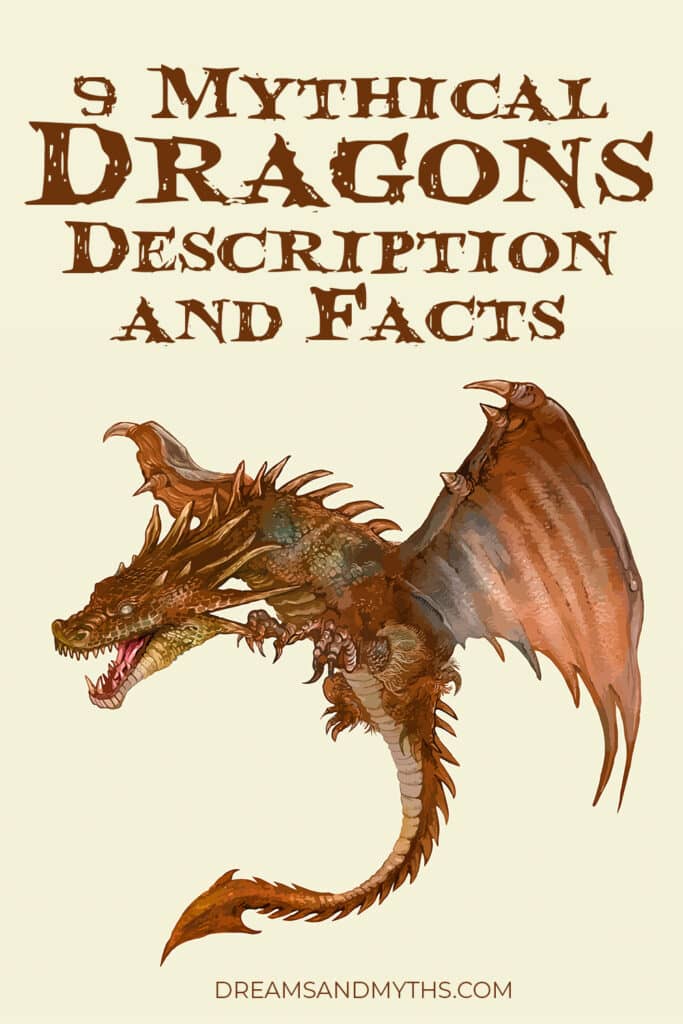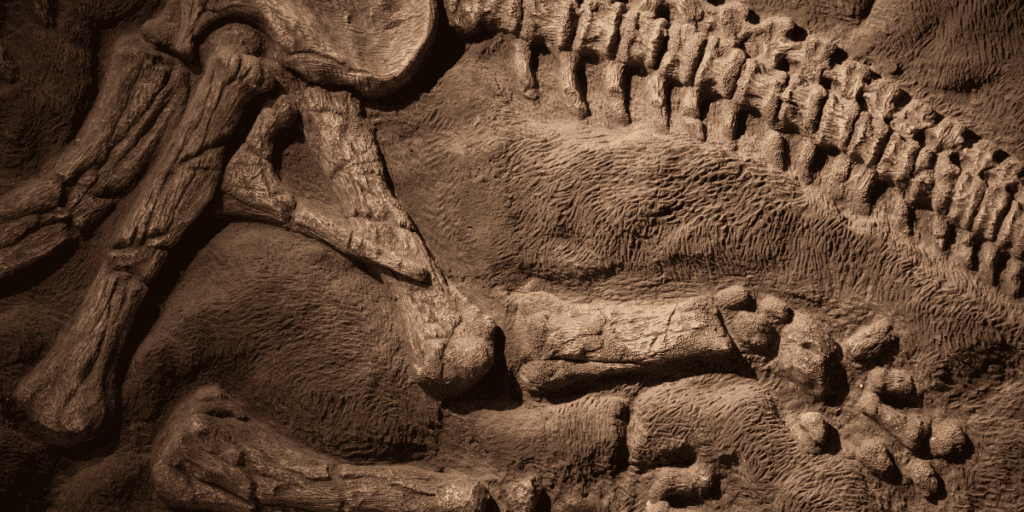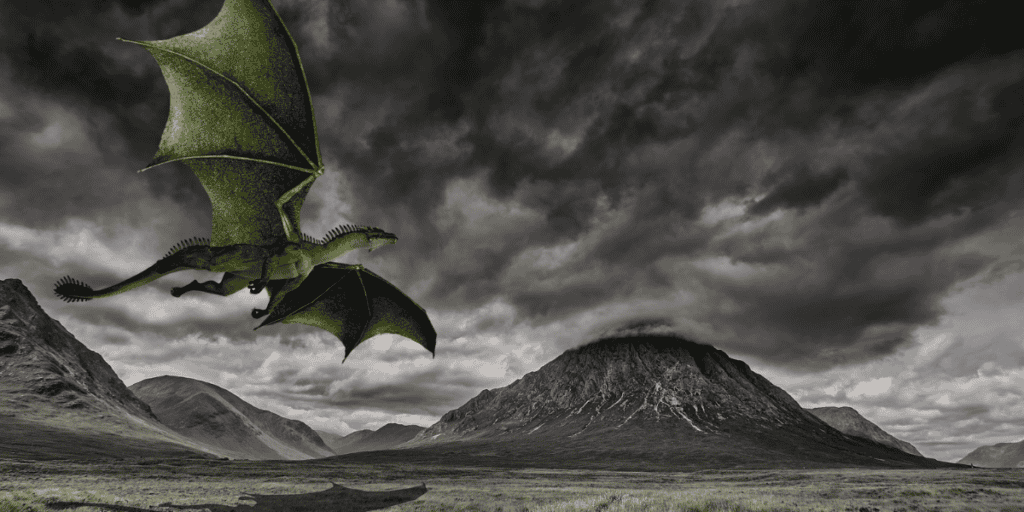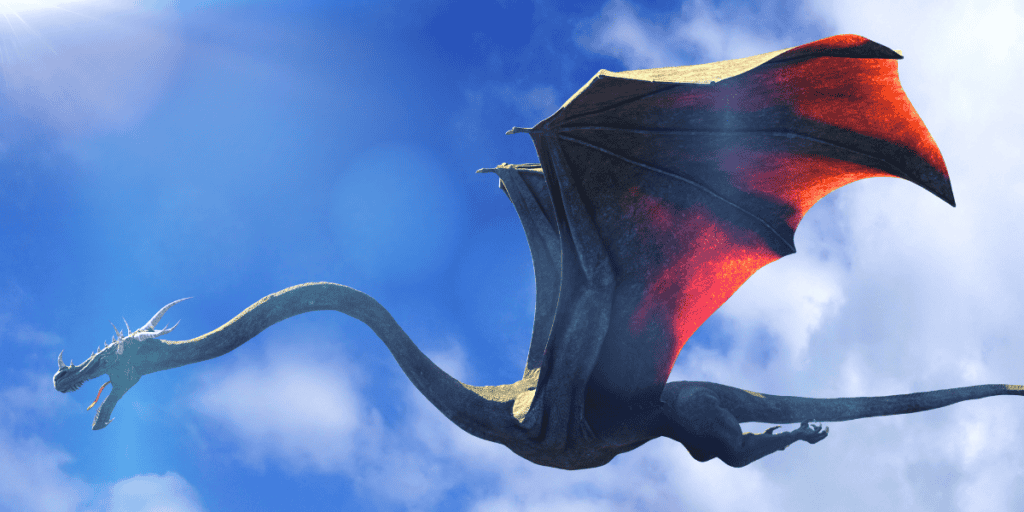When we were little, we heard stories of how the prince defeats a dragon to save the princess, or accounts of dragons breathing fire and flying up in the sky, their wings so huge that they could almost block the sun. But have you ever wondered, what were the dragons, and how these tales came into existence?
Among various legends and myths, it’s undeniable that dragons have captured a unique place in the mythological accounts of diverse cultures worldwide. Myths and legends worldwide have mentioned mythical dragons as symbolic figures or as divine beings possessing supernatural powers.
Coincidentally, even though the mythical traditions have grown differently in various regions without much influence from other communities, there’s a striking similarity between different accounts of mythical dragons. The dragons are mentioned as Gods, demons, or even national personifications, and the contrast depends on varied regions and civilizations across the world.
In this article, we will be discussing nine well-known mythical dragons and their facts and descriptions. We will also be covering what dragons are and the origin of these dragon myths.
Overview of Dragons
The term “Dragon” originated from the Latin word “draconem,” which stems from the Greek word “drakon,” meaning huge “serpent” or “giant seafish.” Another possible origin of the term might be the Greek word “derkomai,” which meant “a deadly glance,” which dragons naturally exhibited.
So generally speaking, we can describe a dragon as a form of a serpent that has a fearsome nature and has some character traits like flying, breathing fire, or harnessing elemental powers. In various cultures, dragons were seen as sharp and intelligent demigods or as extraordinarily fearsome and difficult to kill.
The beliefs of a region were mainly influenced by geographical location. The Western culture saw dragons as evil beasts that signify chaos and death. Dragons have also been depicted to be living in places that were dangerous to explore. In some mythical tales, the natives imagined the dragons to guard caves full of riches or treasure troves.
However, in Eastern cultures, people saw dragons as knowledgeable creatures that had control over the elemental forces of nature like wind and water. Also, they believed them to be mighty and benevolent creatures who could ward off evil.
Origin of Dragon Myths

There are numerous theories as to how the dragon myths originated. The most reliable views were inspired by existing creatures, undiscovered life forms, and fossil remains. Let’s discuss these points in more detail.
Dragon Myths Based on Existing Creatures
Compared to all other theories of the origin of dragon myths, this theory can be explained easily. Many ferocious animals like snakes, eels, or monitor lizards thrived during those times, and people might have depicted them as dragons. For example, in stories like “Thakane, The Princess Dragon Slayer,” the animal portrayed as a dragon shared similar characteristics as a crocodile.
Dragon Myths Based on Fossil Remains

There might have been instances when the people of ancient civilizations discovered the fossil remains of dinosaurs and other prehistoric animals and then used their imagination to create dragon myths and tales. This is a popular theory as many fossils were discovered from the same areas where these myths were previously formed.
Dragon Myths Inspired by Religion
There is an excellent chance of dragon myths being inspired by religion. Let’s talk about Vritra, the serpent representing drought in Aryan texts. We can see the ancient Vedic mythology being upheld, where the God of rain and thunder, Indra, defeats the Ashura while mentioning the possibility of Vritra being a dragon.
Also, one of the most popular myths to survive in the present is the tale of Yahweh and his battle with the dragon demigod Leviathan.
Fear Inspired Dragon Myths

Lastly, there is a high probability that the fear and primal instincts of the ancient people might have inspired these myths. It’s a well-known fact that humans are subject to fear-related instincts toward snakes or fearsome-looking reptiles.
This point, combined with places where the dragons were said to exist, like oceans, caves, or other rarely visited locations, suggests that native people might have made these tales to preach caution.
Bonus Read: Are you interested in magic and witchcraft in the modern era? Read on to know more about magic, witchcraft, and folklore in the 21st century.
The 9 Mythical Dragons
As stated before, mythical dragons have been an integral part of multiple significant civilizations worldwide. Now that we have a clear idea about dragons and how the myths came into being, let’s have a look at nine of the most popular mythical dragons.
1. Long

The Chinese dragon, popularly referred to as “Long” or “Lung,” is an integral part of Chinese mythology and is also known as the Oriental Dragon. It was depicted as a long snake-like creature with four legs and an ancient symbol indicating power, strength, prosperity, and good luck.
In Chinese culture, dragons are considered as wise and super-intelligent beings. They were revered to the extent that the dragon represented imperial power during many dynasties in China.
The Chinese dragons have a very detailed physical appearance. Apart from the characteristics mentioned earlier, they have the head of a horse, camel, or crocodile. They also have claws, whiskers and demonic eyes, and tiger-like paws. Moreover, The dragons possessed a lump known as “Chimu,” which allowed them to fly.
According to myths, Chinese dragons can control water and weather, and they’re the main reason for bringing storms and floods. Above that, they are the rulers of moving water bodies like rivers or seas.
Interestingly enough, during ancient times, Chinese villages came together during droughts and floods and performed rituals to appease the dragons and end the natural hazard.
2. Quetzalcoatl
The Quetzalcoatl or the Kukulkan meant “the Feathered Serpent” in the Nahuatl language and was worshipped by different ancient Mesoamerican cultures such as the Mayans, Toltecs, and Aztecs for more than a millennium.
The Quetzalcoatl had two forms, out of which the primary form was of a feathered serpent capable of flight and having rich plumage on its head and body. This dragon was also capable of transforming into a human. The features varied according to different cultures but generally included a red beak, a plumed headdress, and shell jewelry.
The Quetzalcoatl was revered as the God of creation, procreator of the morning and evening star, and protector of artisans. The dragon was also referred to as the God of the elementals and often called the rainmaker, wind blower, and fire bringer.
Some myths state that the Mayans and the Aztecs used to fear solar eclipses, as according to them, the Earth serpent swallowed the great Quetzalcoatl, thus causing an eclipse. It’s believed that Quetzalcoatl and the other gods brought humanity to life by shedding their blood, and the debt had to be repaid by human sacrifices.
3. Mushussu
The Mushussu or Sirrush was an ancient dragon believed to live in the Mesopotamian region, thought to be an attendant of the Gods. The features of this dragon, as described in myths, was that it was a scaly animal having a horned head, a long neck and tail, the body of a fish, a snake-like tongue, and a crest, and the forelimbs of a lion and hind legs of an eagle.
This creature was predicted to live in Babylonian palaces, and it died at the hands of the biblical prophet, Daniel.
In this story, the Babylonian priests accompanied Daniel to the temple of Bel and showed him the dragon, who was Mushussu. Due to some religious conflict, the priests challenged Daniel for a duel between himself protected by his invisible God Yahweh, against their living God Mushussu.
Eventually, The prophet emerged victorious after poisoning the dragon and finally causing its death. This fable has been one of the most famous dragon myths since time immemorial.
4. Apophis
Apophis was a powerful and feared spiritual being who was the greatest embodiment of chaos and darkness. He was the greatest enemy of Ra, the Sun-God, and was one of the important symbols in Egyptian mythology. Apophis was also known as Apep, meaning the “Serpent of the Nile,” “the Evil Dragon,” and the “Lord of Chaos.”
Ancient Egyptian myths stated that the massive serpent was about 50 feet in length, and its head was made of flint. Its terrifying roar caused the underworld to tremble, and his movement caused earthquakes.
The myths also stated about the daily battles fought between Ra and Apep. It was considered that the sunset at night and rose in the morning, signifying when Ra must descend into the underworld and battle the enormous serpent to protect the Egyptian people.
Ancient Egyptians also practiced rituals to assist Ra in winning the battle against Apophis, who prevented Ra from bringing dawn. The Egyptians believed that if somehow Apophis gained victory over Ra, it would lead to the end of the world.
5. Vritra

Mentioned in ancient Aryan Vedic texts, Vritra, also known as Ahi, was an Ashura (an evil spirit seeking dominance and power) in the form of a serpentine dragon. Vritra personified the droughts and was responsible for restricting and blocking the flow of the river courses. He was the adversary of Indra, the God of rain and thunderstorms and the king of heaven, who heroically destroyed him and his deceiving forces.
In the end, an intense and epic battle between Indra and Vritra took place, where Indra successfully destroyed all 99 of the serpent’s fortress and killed the snake by breaking his jaw into two. Indra generated this considerable power within from an enchanted drink known as the “Soma raas.” After the defeat of Vritra, all the rivers were freed, and constant water flow was restored.
6. Druk
Described mainly in Himalayan and Tibetan mythology, the dragon of thunder, also known as the Druk, was an orb-holding serpentine creature believed to live in remote areas of Mount Everest. It’s said to bring storms and sun to the Tibetan and Bhutanese people.
The Druk is also the national personification of the Buddha sculpture, mythology, and monarchy. The thunder drake can be seen prominently on the Bhutan flag and during the national anthem known as the Druk Tsendhen.
The nation of Dzongkha, which the Himalayas surrounds, is known as Druk Yul, or “the land of Druk.” In Tibet, the leaders use the title of “Druk Gyalpo” or the “Thunder Dragon Kings” as inspired by the mythical dragon.
7. Leviathan

Christian legends and myths tell us about Leviathan, one of the most popular serpents in the world of mythology. Myths describe Leviathan as a deadly serpent, about 300 miles in length, with doubled armored scales so tight that even air could not pass through them. The characteristic feature of Leviathan is its ability to breathe fire with glowing eyes and highly vibrant skin.
Legends say that there were two Leviathans, a male and a female. However, after their creation, they became corrupted. Thus, the female had to be killed to abstain from procreation, which might have led the spawn to devour the whole world. Additionally, legends state Yahweh will one day descend to the Earth and kill the great serpent permanently.
8. Boitata
The Legend of the Boitata appears in the mythology of Brazil’s native “Tupi” people. It is said that the dragon can breathe fire and incinerate those who try to harm the forest or start a fire. Even more threatening, it could disguise itself as a tree and kill any lumberjack who wanted to inflict harm upon nature.
The story behind the Boitata states that a long time ago, there was a period of darkness and worldwide flooding that killed many animals. A hungry anaconda left its cave searching for food, and it found a pair of bright gleamy eyes that shone in the dark, eventually eating it.
After the anaconda ate the eyes, its body began to shine, and it started to feel weak. The serpent died with a great burst of light, giving birth to the sun and ending the darkness forever.
However, it’s still believed that the spirit of the anaconda still lives and haunts the Amazonian jungles. Rumors say that if someone accidentally sees the eyes of the Boitata, it might turn the gazer insane.
9. Zmey
According to Slavic mythology, Zmeys are ancient three-headed dragons that are highly intelligent and benevolent. They were said to have four legs, bat wings, and could breathe fire. If all the drake heads were not cut off, their ability to regrow again would kick in.
However, there is a problem with Zmeys. They were known for being notorious and lustful towards humans. Many myths tell us about the dragons transforming into handsome young men and then wanting to attract maidens.
If a human fell in love with the dragon, it did not end well. The Zmeys used to make the maidens prisoners and treat them like slaves. But there were also dragon slayers who hunted these “mythical” dragons and rescued the women.
Verdict
To wrap things up, there has been a lot of controversy regarding whether dragons were real and if they actually roamed Earth. Some people believe that dragons are real, and they have given on-point arguments to prove it.
They stated that it’s impossible for people of different regions, utterly oblivious to the presence of others, to have similar imaginations and build random stories. Furthermore, they mentioned that the description of dragons as written in the myths of different cultures are strikingly similar and in no way can be made up if not visualized.
On the other hand, another sect of people claim that the cultures coming up with mythical dragons resided in the same regions where many dinosaur fossils have been excavated. Even today, we do not know how dinosaurs looked, as it’s difficult to assume just by looking at the skeletons.
The controversy regarding mythical dragons might never end, but a close introspection on the topic leaves us with one question, were the dragons real? Or are they myths, just like fairy tales? Only time will tell before unraveling new mysteries!
Bonus Read: Want to learn more about Indian mythology after reading Ramayana and Mahabharata’s great epics? Here are nine fascinating facts about Hindu mythology to enhance your knowledge.
